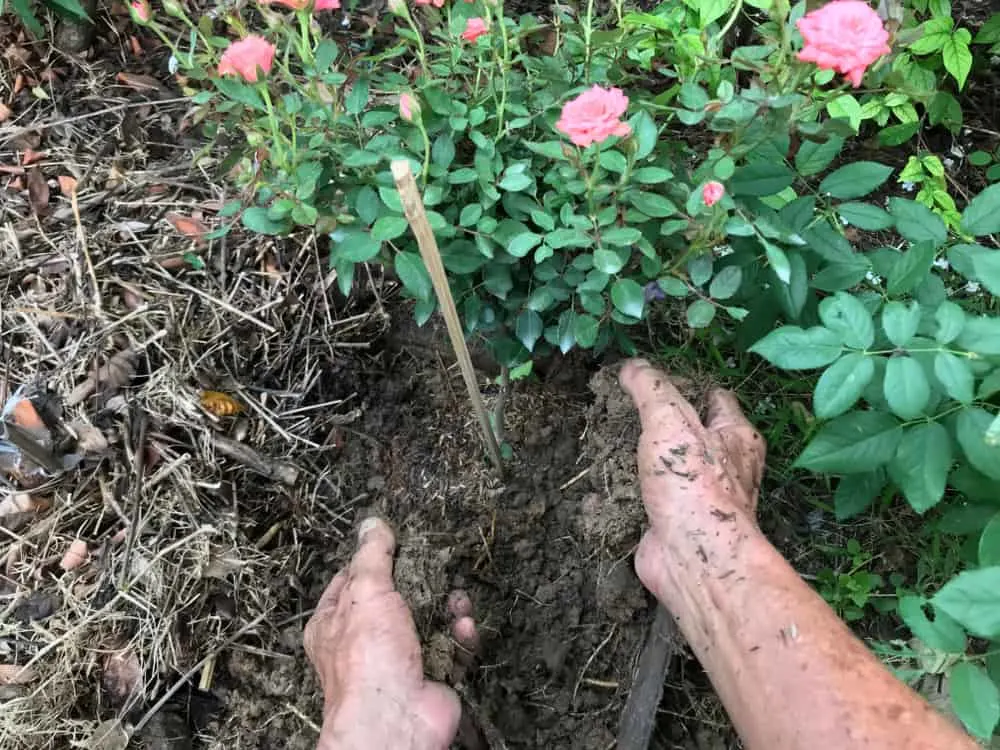
Roses are often considered to be challenging plants to grow. But choose the right roses for where you live, and they are actually a fantastic low maintenance plant.
There are amazing cultivars that will work well in many different gardens.
That said, for the most beautiful and abundant blooms, it is important to make sure you maintain fertility. Here’s how to fertilize roses for the most beautiful and abundant blooms:
Think About What Roses Need
Like other plants, roses need nitrogen, phosphorus and potassium in order to grow. They also need a host of other micro-nutrients, including calcium, magnesium, sulfur, copper, iron, boron, manganese, and zinc.
Many of these nutrients may already be available in the soil. But nitrogen, potassium and certain other nutrients can be washed out or depleted easily.
So while roses can often thrive on neglect, you should think about replacing these basic components of plant nutrition for best results.
There are plenty of ‘miraculous’ rose feeds and rose fertilizers on the market. But many do more harm than good. Choosing synthetic fertilizers is never a good idea.
Organic growing is always the best option, and will not only allow beautiful blooms, but also ensure the long term health and fertility of your garden.
So how to we make sure we get beautiful blooms in a healthy, organic garden?
Marvellous Organic Mulches To Fertilize Roses
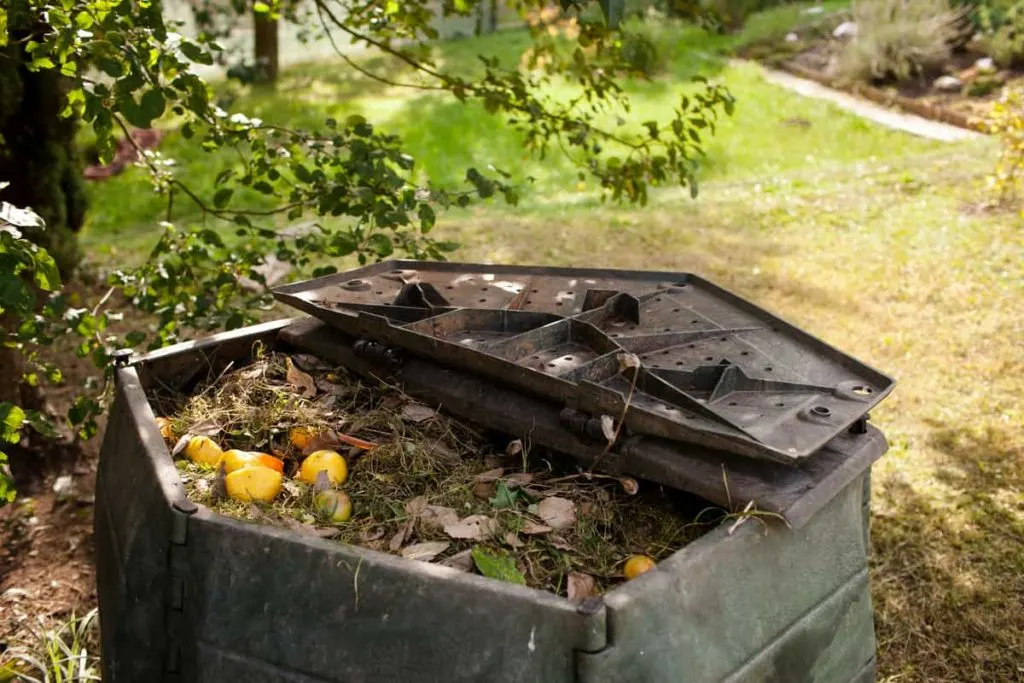
First of all, mulches are important. Marvellous mulches to fertilize roses include:
- Good quality home-made compost.
- Composted manures (esp. horse manure – mix 50/50 with other organic mulches to avoid burning roses).
- Shredded fall leaves or leaf mold.
- Wood chips and grass clippings (both together is better than either alone).
- Bark/ cedar chips and green leafy materials (again, add both carbon and nitrogen rich materials together for best results).
- Seaweed mulch (for micro-nutrients).
Mulches are best applied in early spring, then replenished every 2-3 months to keep your roses strong and healthy throughout the growing season.
Mulches are a great way to add fertility, since the materials will break down slowly, adding slow-release nutrients to the soil for roses to use.
Liquid Fertilizers To Feed Roses
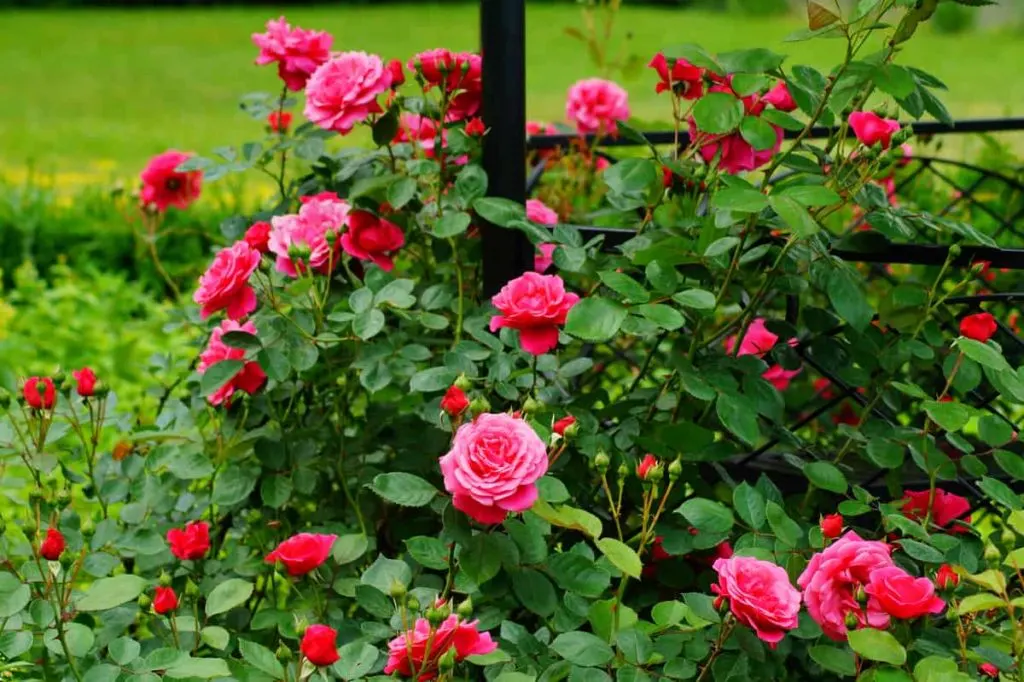
Using homemade liquid fertilizers can also help you get beautiful and abundant blooms.
There are a number of synthetic liquid feeds for roses on the market. But these can lead to over-fertilization and cause a whole range of problems for the garden ecosystem.
Keep things organic, and consider making your own liquid rose feeds from simple, natural ingredients. For example, you can use:
- Plant-based liquid feeds made from weeds or other garden plants, such as a comfrey feed, a general weed feed, or another feed made with dynamic accumulator plants (especially those with plenty of potassium to promote flowering).
- A liquid feed made from seaweed (or kelp powder).
- The liquid run off from a wormery or other composting system.
- The water from a fish tank or aquaponics system.
- A liquid feed made from simple store-cupboard items and a few additions. For example, here is one recipe to consider:
– 3 cups water
– 2 tbsp molasses
– 1 tbsp Epsom salts
– 2 tbsp apple cider vinegar
– 1 tbsp kelp extract
– 2 tbsp powdered fish. (or fish emulsion)
Apply a liquid feed in spring, then repeat in mid-summer, and again, near the end of summer, to encourage blooms until late in the year.
Other Ingredients to Add To Soil Around Rose Bushes
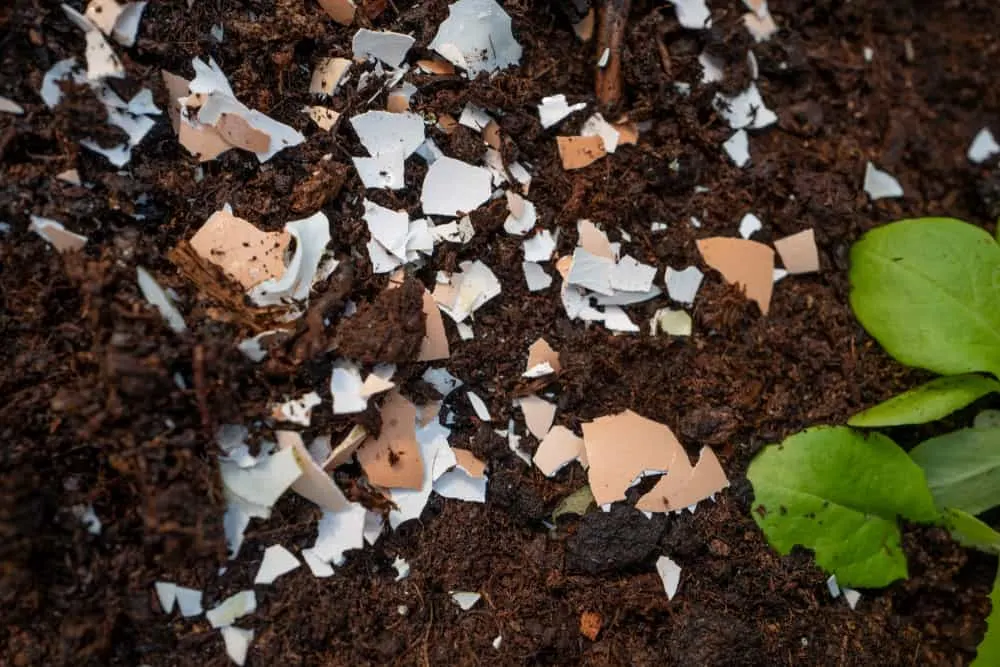
While the bulk of fertility should come from mulches and liquid feeds, you can also add other ingredients around rose bushes for beautiful and abundant blooms. For example, you can add:
- A sprinkling of Epsom salts (upon planting or in spring, for general plant health).
- Bone meal / blood, fish and bone. (Mostly only required where phosphorus – usually abundant in soil – is low.)
- Alfalfa pellets or alfalfa meal.
- Banana peels (for potassium)
- Eggs shells/ milk powder/ ground oyster shells etc.. (for calcium).
- A sprinkling of coffee grounds (for potassium, nitrogen and magnesium – not as a stand-alone mulch, but as an additive along with other materials).
Other Ways To Ensure Beautiful and Abundant Blooms
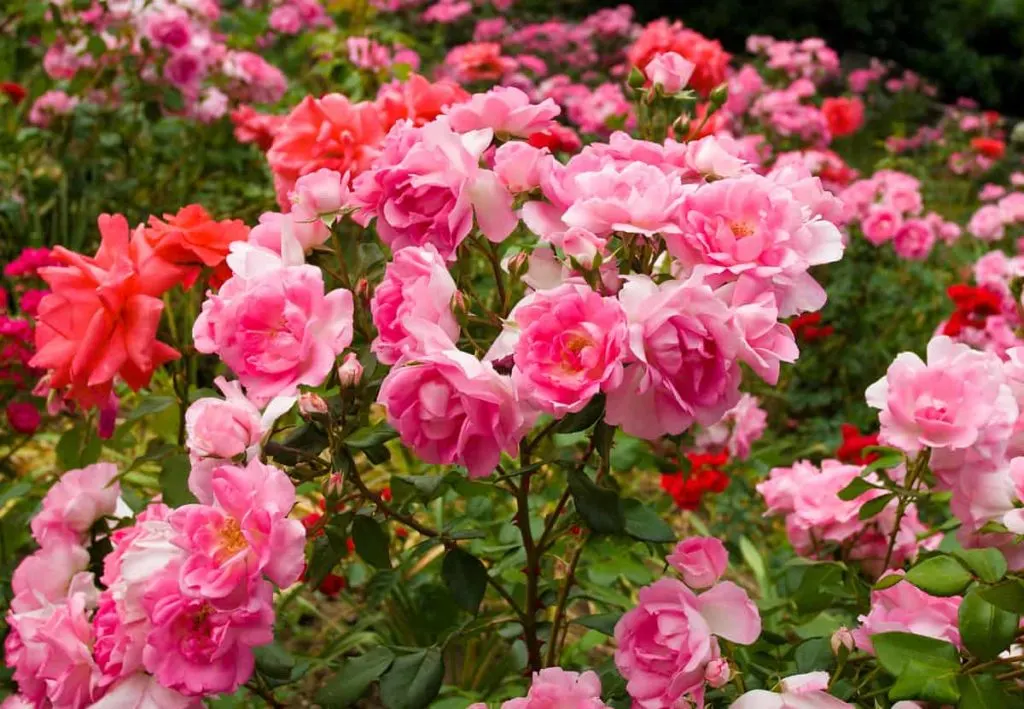
- Ensure roses have enough space to thrive. Planting companion plants can help reduce pests and enhance the visual appeal of a rose garden. But make sure these are at least 12 inches away from the base of your roses so there is not too much competition and roses’ roots are not detrimentally impacted.
- Make sure your soil pH is right. Roses generally require a pH between 6 and 7. A higher or lower pH can affect nutrient absorption. So get this right before fertilizing.
- Get watering right. Water roses before and after applying fertilizers to avoid burning the plants and to deliver the nutrients to the plant roots where they are needed.
- Avoid fertilizing roses during extremely hot periods. Water well, and fertilize when it cools to avoid stressing plants.
- Use the right pruning techniques for the roses you have chosen, at the right times, to make sure you get as many healthy flowers as possible.
Different roses require different growing strategies and techniques. Which fertilization will work best depends on the exact climate, soil type and conditions where you live.
But by choosing the right roses to grow, and fertilizing and caring for them correctly, you can have beautiful and abundant rose blooms in an entirely organic garden.
